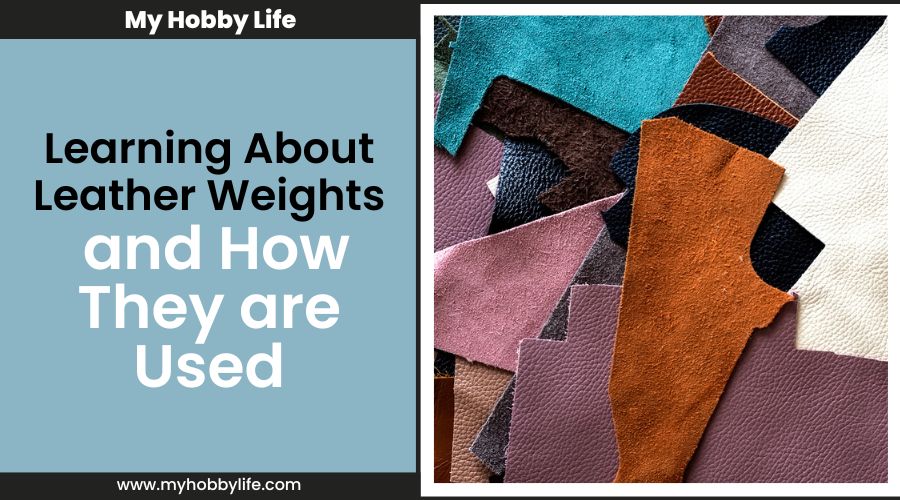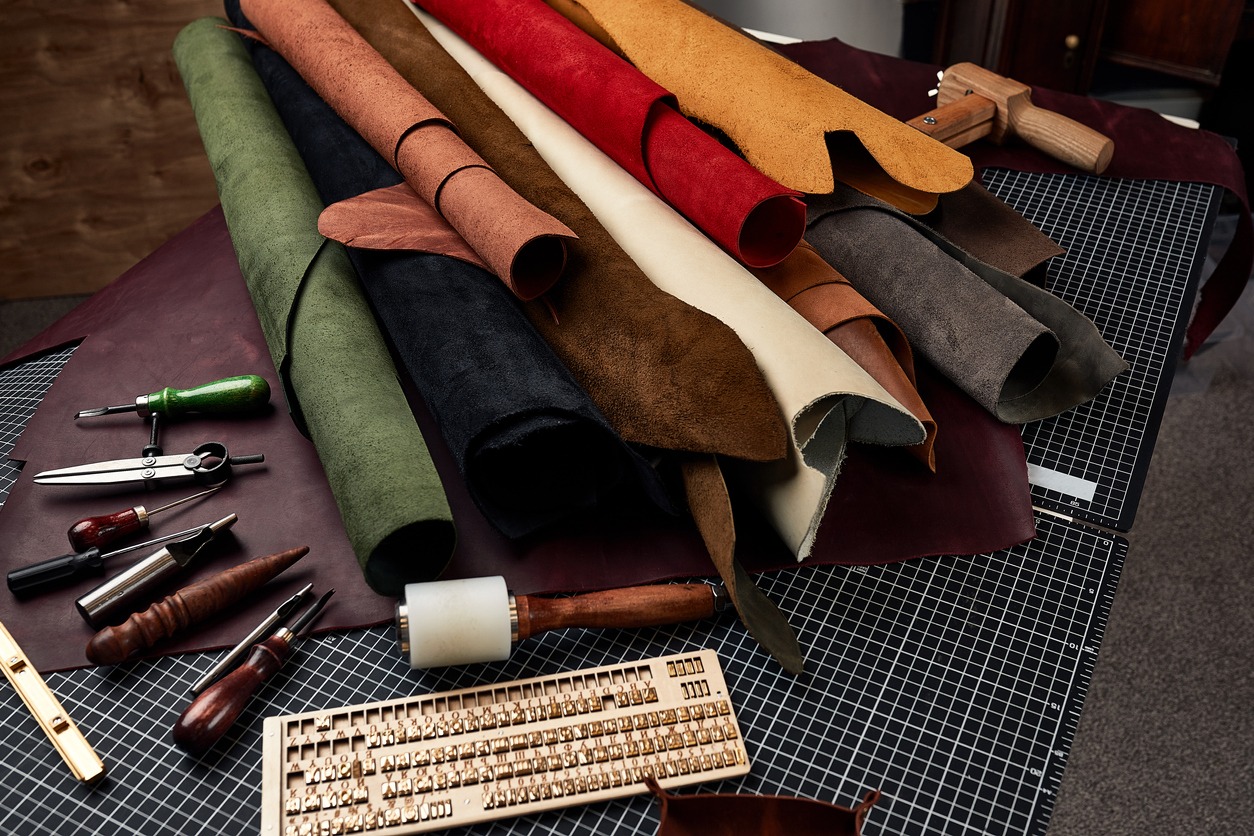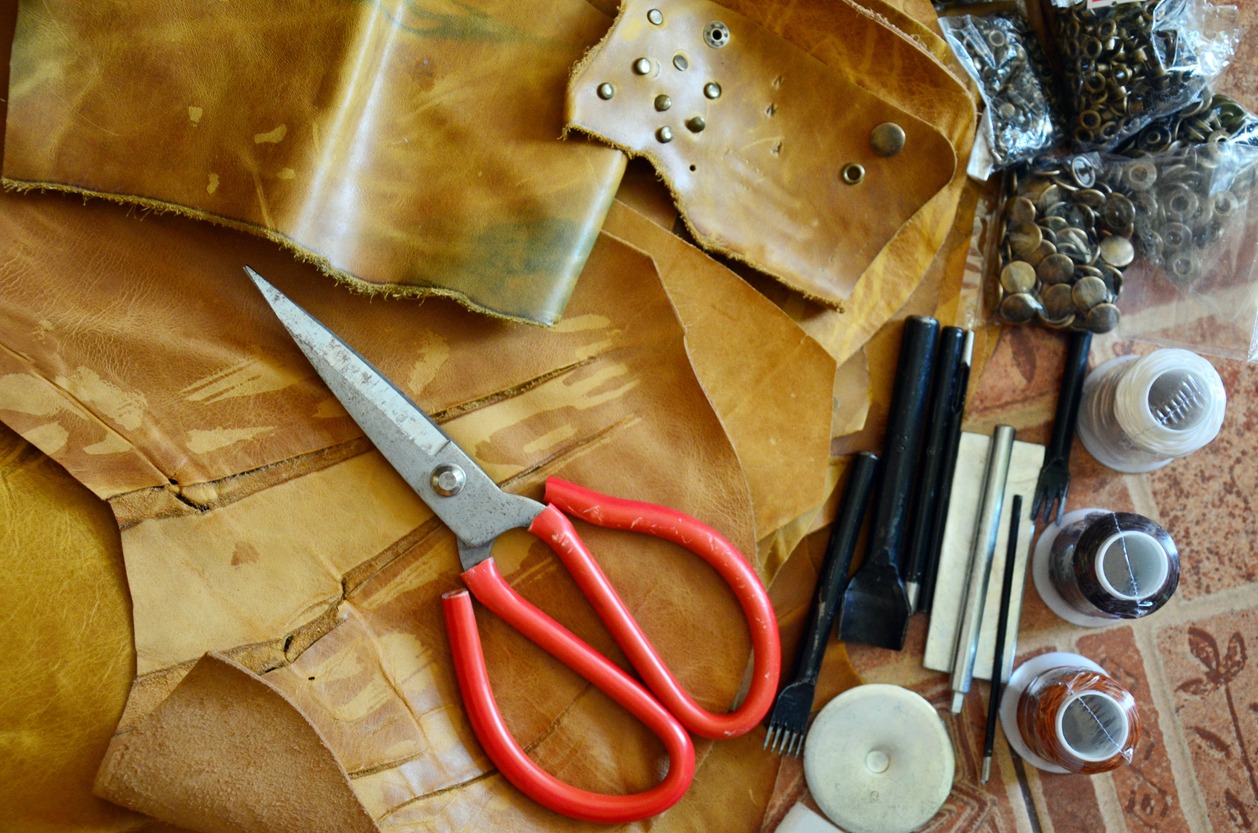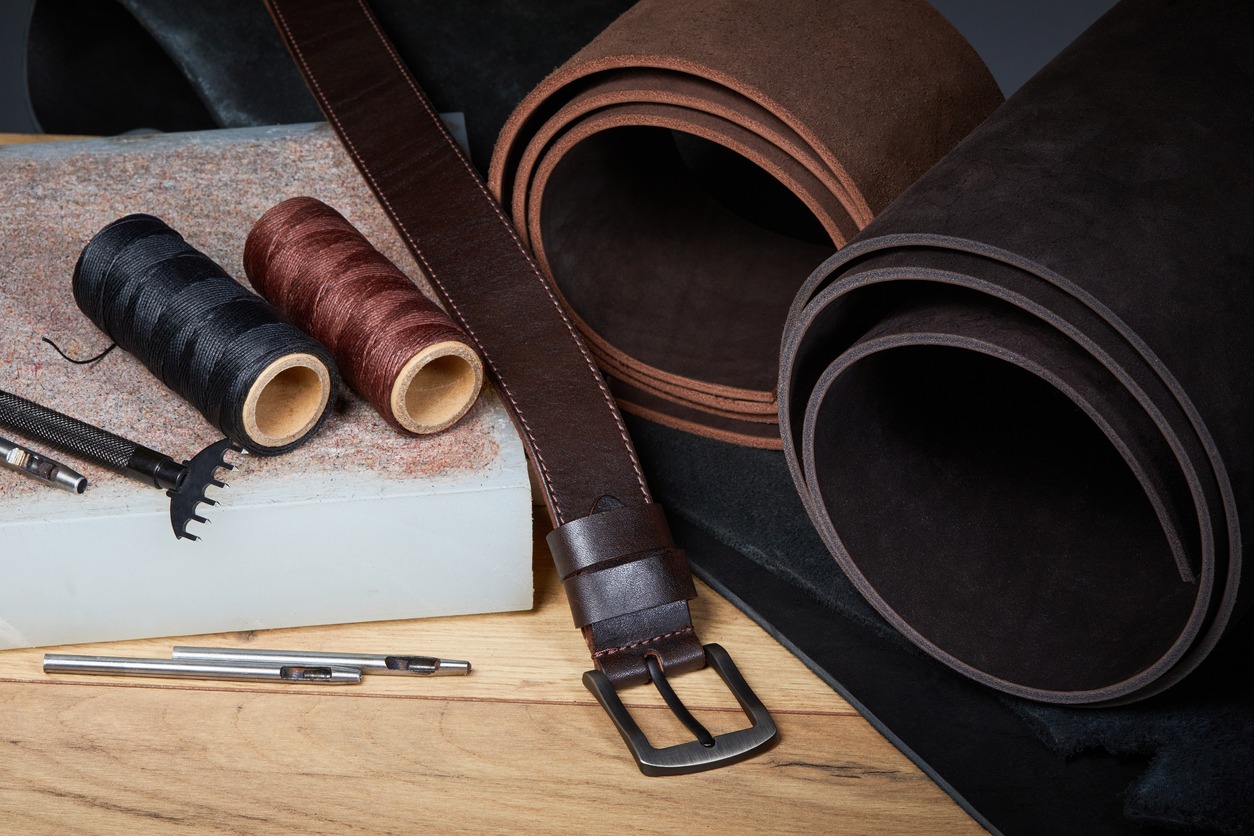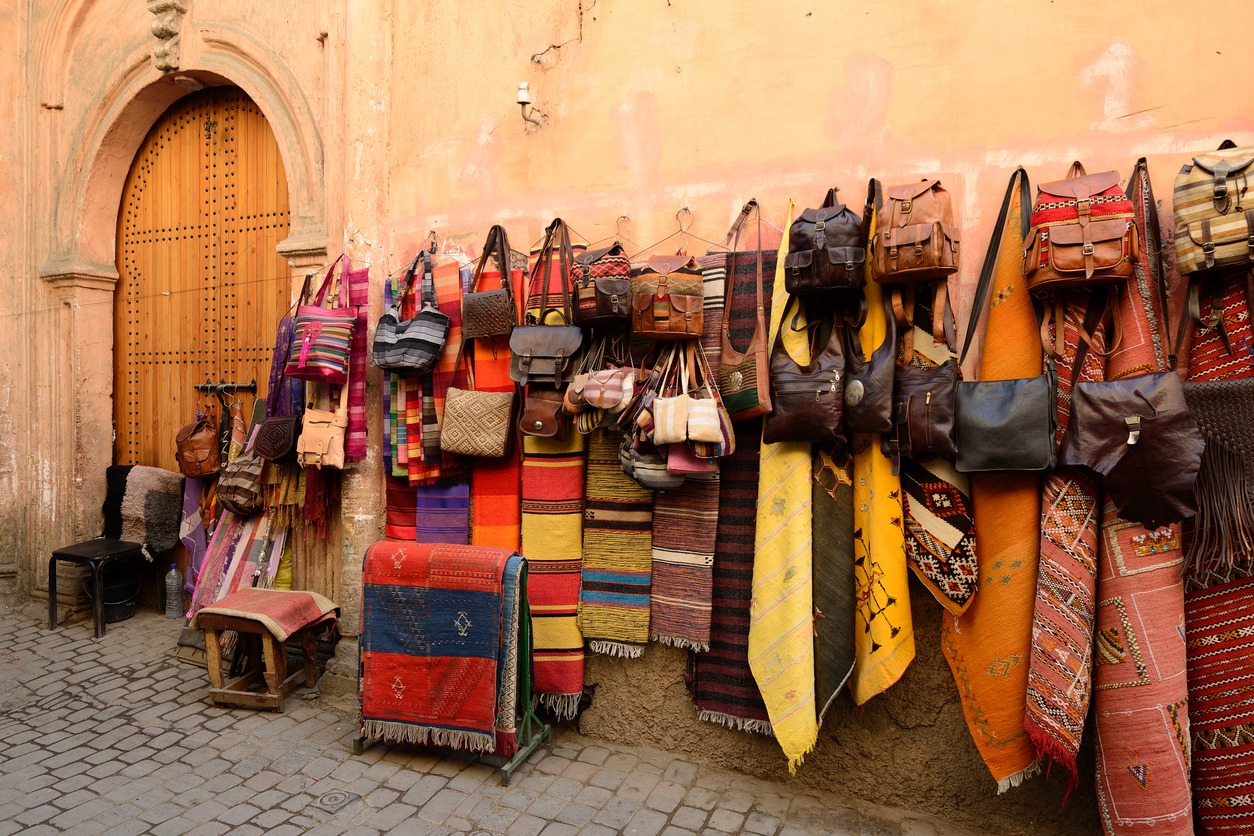The word “Leather Weight” is probably unfamiliar to you unless you’ve done some Leatherwork yourself. When working with Leather, selecting a suitable leather weight for the intended use is crucial. It’s no secret that the fashion industry pays close attention to the heft of its materials and fabrics. You may be familiar with denim weights, but do you know how much your belt weighs? A wide range of leather weights is available, but you may need help identifying and categorizing them properly.
What is Leather Weight?
Selecting a suitable leather weight is crucial. When faced with so many options, it’s easy to get overwhelmed and end up with the wrong weight of Leather for your job. The term “Leather Weight” comes from the common North American practice of measuring the leather thickness in ounces. While different industries worldwide may use different gauges to measure Leather’s weight or thickness, you’ll typically come across three common measurements: thickness (in millimeters or inches), weight (in ounces), and irons.
In North America, weight is the most popular measurement standard. Being a natural substance, Leather can have varying thicknesses over its length and width. Scars and defects in the Leather, the method of splitting the Leather, and the chemicals used in the tanning process are just a few factors that might affect the final thickness. While this is natural and unavoidable, the leather business needed a common benchmark by which products could be measured; for this reason, a single piece of Leather is generally rated in ranges such as 2-3oz.
How is Leather Thickness Measured?
To put it another way, Leather’s “weight” isn’t measured in kilograms. While denim is measured in square yards, Leather is measured in thickness. In most cases, 1 ounce equals 28 grams and 1/64 of an inch in thickness; hence as the lateral thickness of a cut of leather increases, so does the indicated weight. Since animal skin is a natural material, even a single leather hide can have subtle variations in color and texture. Therefore, leather weight is typically reported as a range rather than a single value.
While the ounce is still the most frequent measurement unit, some companies provide millimeter measurements (2mm leather waist patch, for example). It’s important to note that the manner and intensity of tanning used to treat the hide will impact the final piece of Leather that enters the production line, as different types of Leather require different treatments. The most important thing to remember is that no two pieces of Leather are alike and that, like with denim and cotton, a heavyweight measurement only sometimes defines quality.
1. Weight (oz)
Historically, designers have relied on weight (often expressed in ounces) to measure a fabric’s density and thickness; this practice has become commonplace in the garment and textile industries. In industrial tanneries, the thickness of Leather is typically measured using a metal caliper, a piece of notched wood, or a laser sensor. Typically, a 1-yard by 1-yard square is cut from the fabric and then weighed to determine the fabric’s weight in ounces in the textile industry.
Whether you’re working with Imperial or UK units, 1 ounce is equal to 1/64 of an inch or.4 mm. A piece of this fabric measuring 1 yard by 1 yard would weigh 12 ounces because it is a thick heavy-duty canvas with a gauge of 12 oz. Although a yard of fabric is typically used to determine the weight, a square foot of Leather is used since it is denser and thicker than other fabrics. Having the scale begins at a lower oz value, like 1oz, is made possible by the smaller square size. The thickness of one ounce of Leather is equal to one-sixteenth of an inch. An 8-ounce chunk of Leather would be 8/64 inch (or 1/8 inch) thick.
As the skin of an animal, rather than a piece of curated steel, Leather has a naturally varied surface, which means that its thickness may not be uniform over the entire hide. The chemical treatment and drying required in tanning can alter the thickness of the Leather, which is why this is often the case. In addition, each hide is cut into multiple layers, and the thickness might vary over the entire piece. In the fashion and textile industries, this is a very prevalent technique.
2. Thickness (Millimeters)
The millimeter is the standard international unit of measurement for leather thickness (mm). As there is no need for conversions, this universally adopted metric unit of measurement is often used to quantify Leather. The thickness of 0.2 mm of Leather is relatively thin. As the most widely used measurement system on a global scale, it needs no introduction or special calculations to be understood. Just one millimeter represents one-thousandth of a meter. Leather is typically measured in millimeters rather than Irons.
3. Irons
Although these standards apply to all leathers, irons are the tool used by cobblers for measuring shoes. Since the unit has been around for hundreds of years, it makes sense that actual Iron ingots were used to formulate a consistent thickness, like how we think of the legends surrounding measuring in “feet.” An Iron equals 1/48″, so a leather that is 4 Irons thick would be 4/48″ or 1/12″ to make things simple. Irons are used to quantifying the thickness of Leather used for shoe soles and other shoemaking components. Though not widely used anymore, it is nevertheless a valid unit of measure and can be found in usage among persons experienced with leatherworking. One iron is equal to twenty-four and a half thousandths of an inch. One iron is equal to six-fortieths of an inch; therefore, a piece of Leather that is 1/8 inch thick would be six irons thick. It is generally assumed that genuine pieces of iron of consistent thickness were used in developing the iron standard as a unit of measure. This would have made it possible to standardize the thickness of Leather around the world.
Standard Leather Weight
To have every weight of Leather from one ounce to ten ounces or more would be wild in your perfect leather studio. You can always have a regular 1-3-ounce, 4-5-ounce, and 8-9-ounce leather weight type for all your projects. You may have heard that you can always tack together several leather sizes to achieve the desired weight.
1. 1-3 ounces of Leather
Any of the leathers in this selection will be ideal. It is the typical garment-weight Leather for chrome tan leather and vegetable-tanned Leather. At this weight, vegetable-tanned Leather will produce a great mold but have little body or thickness. Excellent for molding leather, four-strand keychains, arm guards, liners, and tassels.
If you want to build a project that calls for thicker Leather (like a purse or holster) but has lovely pieces of Leather that weigh just 1 to 3 oz, you can line that Leather using contact cement and add another piece of Leather. Given its extreme lightness, Leather in this range molds well but will require support. As a result, the Leather will have a uniform appearance, feel, and behavior. Remember that you can increase almost any leather weight to create a higher weight when lining Leather.
2. 4-5 Ounce Leather Weight
This weight of Leather will be between 1.6 and 2.0 mm thick. Lightweight wallets, leather masks, coin purses or clutches, compact cases, and light notebook covers are typical items that use this leather weight. This weight is ideal for jobs that call for flexibility and lightness. This weight offers lovely corner and molded design options, molding and taking nearly all decorative leatherwork techniques.
3. 6-7 Ounce Leather
The Leather of this weight will be between 2.4 and 2.8 mm thick. The most popular uses for this leather weight are compact pistol holsters, knife sheaths, narrow belts, camera cases, and journal covers. This weight is useful for various crafts since it combines flexibility and strength. It may also be used for carving or making tools.
4. 8 to 9 ounces of Leather
In this range, Leather is between 3.2 and 3.6 mm thick. This thickness is frequently used for saddle bags, belts, and medium-to-large holsters. Projects that call for stiffness and strength are the main uses for this leather weight. It offers ample depth for stamping and tooling. Although it is heavyweight Leather, it is not as mold resistant as lighter-weight Leather.
Common Products Made of Leather
Leather is a versatile material with a wide range of applications. Because it is both strong and stylish, it has countless uses. Find a local expert who can frequently treat and take care of your collection if you appreciate leather goods, particularly apparel and footwear.
1. Leather is used in binding
The history of books and bookbinding is intricately entwined. Since the beginning of bookbinding, it has been one of the most popular binding methods. The western bookbinding tradition has a long history of using Leather. Practicality is the only significant factor behind leather bookbinding.
2. Using Leather in clothing
Leather has been used to make clothing for as long as man has existed. Animal skins were utilized in the Stone Age to create clothes, straps for tents, and tent walls: leather bands, leather watches, belts, shoes, and gloves. There is Leather everywhere, and many individuals own leather shoes, accessories, clothing, and other items.
3. Utilizing Leather in saddles
Although Leather is used for saddles in many places, the horse saddle is the most common. Saddles are another name for the seats on motorcycles and bicycles. Processed Leather for saddles is usually full bovine Leather that can sustain heavy loads. Saddles are subjected to mechanical stress, sweating, fatty skin, and routine dusting.
4. Using Leather in Furniture
About 35% of all upholstered furniture sold worldwide is covered with Leather. The best Leather for leather furniture is bulldozed Leather. Suppliers may be able to provide sheepskin in rare instances and with some exceptions. Sheepskin upholstery is not something you’d often find in a furniture store.
5. How to make bags out of Leather
Leather has been used in transporting products since it was discovered. From a simple leather bag in the past, there are now innumerable varieties of bags available today, ranging from leather handbags to leather bags, which are the most popular. Briefcases made of Leather have a long history. They are primarily made of sturdy perishable skin, much like sacks, but soft goatskin is also employed. Bags made of Leather have a long history. In the past, bags were virtually exclusively made of Leather. Most leather bags are composed of full, thick calfskin.
Conclusion
When purchasing Leather for a project, it is useful to understand the thickness and weight of the material. Different thicknesses and weights are preferable for various project types and labor methods. In most cases, leather thickness is expressed in ounces. Every ounce is equal to 1/64″ (0.4mm). Leather weights are frequently stated in ranges to account for changes in thickness.
Throughout the world and in numerous industries, leather thickness has been measured using gauges in various units. The tanning process, which includes everything from the chemical procedures utilized to the kinds of drying and finishing done, can also impact these variances in thickness. A few distinct units of measurement, namely ounces, millimeters, and irons, were created and employed to have a uniform unit of measurement. “Irons” is one way to quantify leather thickness. Cobblers frequently use an earlier unit of measurement known as iron to make shoes. In contemporary leatherworking, irons are only used sometimes. However, it continues to be a standard used by individuals who are accustomed to or prefer that unit of measurement.
Furthermore, the millimeter is the most widely used measurement for leather thickness (mm). The millimeter, one-thousandth of a meter, is the unit of length measurement used in the metric system. This measurement unit is particularly well-liked because it directly relates to the Leather’s thickness. Ounces are another unit of measurement for leather thickness. The United States is where you’ll mostly find this unit of measurement regarding material thickness. The Imperial system employs feet, inches, pounds, and ounces and is the USA’s most widely used system of weights and measures. Because it can provide a constant thickness value for a typical sample size of Leather, Leather is measured in weight as ounces. For many years, the clothing and textile industries have offered fabric measurements in weight, frequently in ounces.
